Why ‘flammable ice’ could be the future of energy
 Getty Images
Getty ImagesLast year, Japan succeeded in extracting an untapped fuel from its ocean floor – methane hydrate, or flammable ice. Proponents argue that it will offset energy crises, but what are the environmental risks?
Buried below the seabed around Japan, there are beds of methane, trapped in molecular cages of ice. In some places, the sediment covering these deposits of frozen water and methane has been eroded away, leaving whitish mounts of what looks like dirty ice rearing up out of the seafloor.
Take a chunk of this stuff up to the surface and it looks and feels much like ice, except for a give-away fizzing sensation in the palm of your hand, but put a match to it and it doesn’t just melt, it ignites. Large international research programmes and companies in Japan, among other countries, are racing to retrieve this strange, counter-intuitive substance – known as fiery ice – from beneath the seafloor to use its methane for fuel. If all goes to plan, they may even start extraction by the end of the next decade. But the journey so far has been far from smooth.
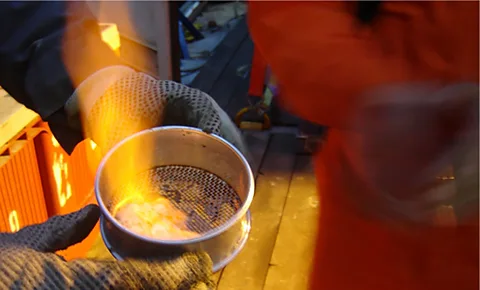 US Department of Energy
US Department of EnergyThere’s no doubt that methane hydrates could offer a major source of fuel, with recent estimates suggesting they constitute about a third of the total carbon held in other fossil fuels such as oil, gas and coal. Several nations, notably Japan, want to extract it. It is not hard to find, often leaving a characteristic seismic signature that can be detected by research vessels. The problem is retrieving that gas and bringing it to the surface.
“One thing that’s clear is that we’re never going to go down and mine these ice-like deposits,” says Carolyn Ruppel, who leads the US Geological Survey’s Gas Hydrates Project.
If you like this, you may also enjoy:
It all comes down to physics. Methane hydrates are simply too sensitive to pressure and temperature to simply dig up and haul to land. They form at typically several hundred metres beneath the seafloor at water depths of about 500 metres, where pressures are much higher than at the surface, and temperatures are close to 0C. Take them out of these conditions, and they begin to break down before the methane can be harnessed. But there are other ways to do it.
“Instead, you have to force those deposits to release the methane from the formation in the seafloor. Then you can extract the gas that comes off,” says Ruppel.
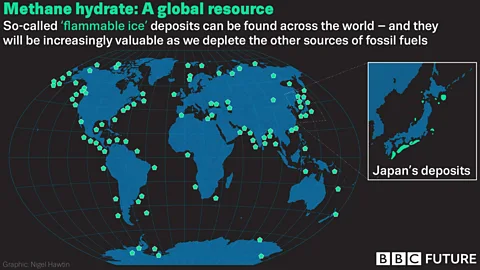 Nigel Hawtin
Nigel HawtinA Japanese government funded research programme is trying to do just that. Its initial mission, after several years of preliminary research scoping out likely spots for methane hydrates, was in 2013. “It was a world-first,” says Koji Yamamoto, director general of the methane hydrate research and development group at the Japan Oil, Gas and Metals National Corporation, and one of the leading researchers in Japan’s national gas hydrates research programme.
The team managed to produce gas from the methane hydrate reserves by drilling a borehole down into the seabed of the Nankai Trough, off the eastern coast of Japan’s main island. By lowering the pressure on the reserves, they were able to release and collect the gas. The test ran for six days, before sand entered the well and blocked the supply.
A second test in 2017 ran in the Nankai Trough. This time the researchers used two test wells. The first encountered the same problem as before and became blocked with sand after several days. But the second of the well ran for 24 days without technical problems, Yamamoto says.
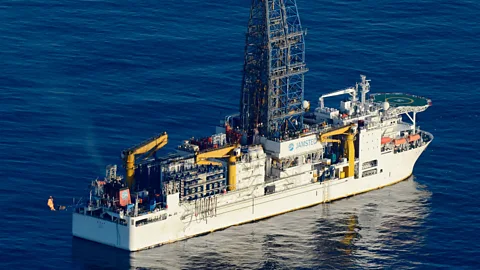 Getty Images
Getty ImagesEven though the tests ran for a short time, they showed that there was a glimmer of potential that Japan might have usable carbon-based natural resources. The public reaction, however, was mixed, says Ai Oyama, a technical translator and former research analyst working on methane hydrates at the Hawai’i Natural Energy Institute. Some welcomed the idea that Japan may have energy independence. Others were very wary about any technique that disturbed the seafloor near tectonic plate boundaries.
“In general, people just feel really scared to do anything to the ocean floor.
Japan's untold stories
Welcome to BBC Future Now's Japan season, in which we explore the country's most exciting medical, technological, environmental and social trends.
Coming up:
The Olympic medals made from recycled phones
How Japan made fatherhood sexy
The secrets of Okinawa's superagers
... and many more.
The fear is that depressurising one part of the methane hydrate deposit might make the whole reserve become unstable.
“People worry that we’ll start extracting methane from the gas hydrates and get into a runaway breakdown where we can’t stop it,” says Ruppel.
The problem with this would be two-fold. First, a lot of methane gas would suddenly be released into the ocean – which could potentially add vast amounts of the greenhouse gas to the atmosphere.
Second, methane hydrate releases a lot of water as well as a lot of methane when it destabilises, which would introduce a lot more liquid into the sediment below the ocean floor. In a steeply sloping environment, a lot of excess water could lead to landslips. Some environmentalists even fear that it could lead to a tsunami.
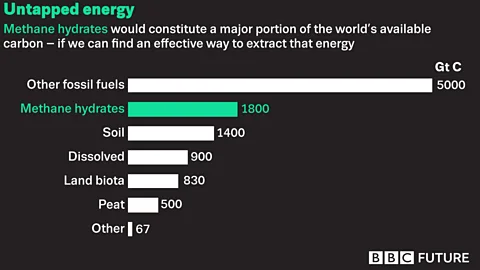 Nigel Hawtin
Nigel HawtinHowever, the physical properties of methane hydrate put a natural brake on this chain of events, says Ruppel. To release methane from a deposit, you have to put energy into the system. Without working hard to release the gas – through lowering the pressure or raising the temperature of the deposit – it simply stays put in its stable form of methane hydrate.
“So the problem is actually the opposite. You may start the process of getting the gas to come off, but to keep that process going, you have to introduce more energy to make it happen,” says Ruppel.
While a runaway reaction isn’t likely, the Japanese programme is still carrying out extensive environmental studies to test the safety of the methane hydrate production. The data gathered at the first test in 2013, and at a second longer test in 2017, so far hasn’t suggested that the technique will destabilise the ocean floor, Yamamoto says. But given Japan’s history of natural disasters – around 24,000 people are still under evacuation order since the 2011 Tōhoku earthquake and tsunami – the public is highly risk-averse.
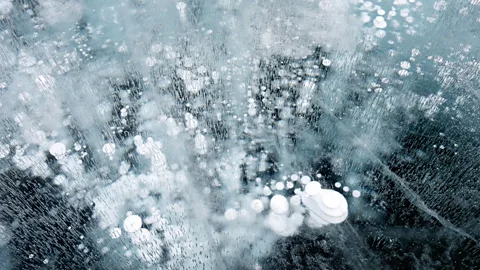 Alamy
Alamy“We feel that gas hydrate production is environmentally safe,” says Yamamoto. “But still, [the public] have a concern about negative effects of gas hydrate production.”
As well as the reserves buried beneath the sea floor, there is another type of methane hydrate deposit that has been gaining attention from Japanese researchers. Efforts to research shallower deposits, very close to the seafloor surface, is also being explored off in the Sea of Japan to the west of the country. Accessing these shallow reserves poses a very different potential risk.
“These are very active biological environments,” says Tim Collett, a senior scientist at the US Geological Survey’s Gas Hydrate Project. “There are whole communities that live off the methane.”
These environments are rich in unique organisms, from bacteria to very large tubeworms and crabs, all specialised to live off the methane as their source of energy. In other parts of the world where these methane-based communities live, they are often protected as rare natural environments.
Beneath the permafrost
Japan’s main efforts in extracting methane hydrate, however are not in the seafloor at all, but in the only other place that flammable ice can found – deep in the permafrost, the permanently-frozen layer of rock or soil that covers the ground at polar regions and high-rise mountains. Researchers from Japan, which doesn’t have its own permafrost, are assisting in the most ambitious on-land production test for methane hydrate so far, in Alaska’s North Slope.
In December, researchers from Japan’s national research programme are set to start work with the US Geological Survey and the US’s Department of Energy, to begin what they hope will be a long-term production test site. While this source of methane hydrate is very different, the methods used to get to it are actually very close.
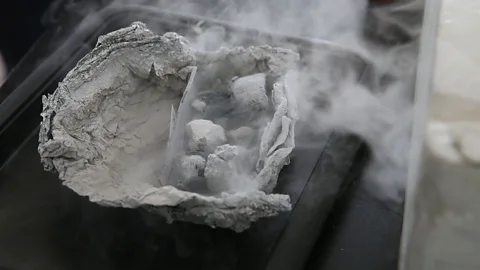 Getty Images
Getty Images“The conditions at those reservoirs under the permafrost are pretty similar pressure and temperature conditions as they are in the Nankai Trough,” says Collett. “It turns out, to the best of our knowledge, even though the Arctic and the marine environment are very different, the physical properties of the deposits and how they occur in the sediments appears to be very similar.”
The production techniques used in Alaska could end up being transferrable to the marine environment. But there are still big challenges. A long-term production of methane hydrates hasn’t been carried out anywhere yet, on land or under the sea.
“We’re still very much in research mode,” says Collett.
Given the difficulty of retrieving gas from methane hydrate reserves, and the concerns around extraction, the stakes have to be high for a nation to invest heavily in this technology. Having very few other options in terms of domestic energy makes this hard-to-access source of methane an appealing prospect. Japan is not a country that has other carbon-based sources of energy to fall back on.
“Japan imports a lot of natural gas, but it is very costly. If we have our own domestic resource, [it could] contribute to the energy security of Japan,” says Yamamoto.
As an economic resource, it’s easy to see the appeal of methane hydrate. But, fundamentally, it is just another source of natural gas and burning it would contribute to climate change.
“The most important thing is the recognition and appreciation that gas hydrates are just another fossil fuel,” says Collett. “All the social and environmental issues associated with fossil fuels apply to gas hydrates.”
In this context, methane hydrates – if they are to play a role in Japan’s energy future – are likely to be used as a bridging fuel, in the transition towards renewables. Natural gas is the least carbon-intensive form of fossil fuel, releasing less carbon dioxide per unit of energy released than coal or oil. But, as a carbon-based fuel, burning it still contributes to climate change.
 Getty Images
Getty Images“We need to shift to renewable energy,” says Koji Yamamoto. “But complete switch to renewable energy [takes] a very long time.”
Even as a transition fuel, gas hydrates could be hugely important, Ruppel says. “Were a country able to efficiently produce methane from these deposits, it could open a new realm in bridge fuels to another energy future,” she says.
How useful a role it can play in the future depends on how quickly methane hydrate can be accessed and produced on a commercial scale. The Japanese government hopes to begin commercial projects exploring methane hydrate between 2023 and 2027, according to its latest Strategic Energy Plan.
This target could be a bit ambitious. Jun Matsushima, a researcher at the Frontier Research Center for Energy and Resources at the University of Tokyo, puts the estimate at around 2030 to 2050. “There is a long way to commercialise methane hydrate,” says Matsushima.
The make-or-break moment will be when a long-term production test can be sustained without technical problems or budget constraints shutting it down, says Ruppel.
“I would guess there will be a long-term production test – from months to more than a year – by 2025. But I don’t have a crystal ball,” Ruppel says.
But at the same time, Japan is committing to moving towards renewable energies and decarbonisation. As technologies for harnessing renewable energy become better and cheaper, the role for fossil fuels – especially experimental and expensive ones like methane hydrate – decreases. The longer it takes to get methane from gas hydrate reserves on a commercial scale, the shorter the useful window for using it may be. The other possibility is that adding in a new accessible source of fossil fuel could delay the transition to renewables, says Collett.
This source of carbon, the most abundant in the world, may be one of the last new forms of fossil fuel to be extracted on a commercial scale. It is also the only one to be developed with the end of fossil fuels in sight. The race for methane hydrates is a unique one, where researchers are working towards a goal that might be made irrelevant by renewables by the time they reach it.
For this reason, methane hydrates may well have a shelf life, but it remains to be seen whether Japan, and other countries pursuing them, will be able to get to them on a sufficiently large scale before they’ve already become expendable.
--
If you liked this story, sign up for the weekly bbc.com features newsletter, called “If You Only Read 6 Things This Week”. A handpicked selection of stories from BBC Future, Culture, Capital, and Travel, delivered to your inbox every Friday.

